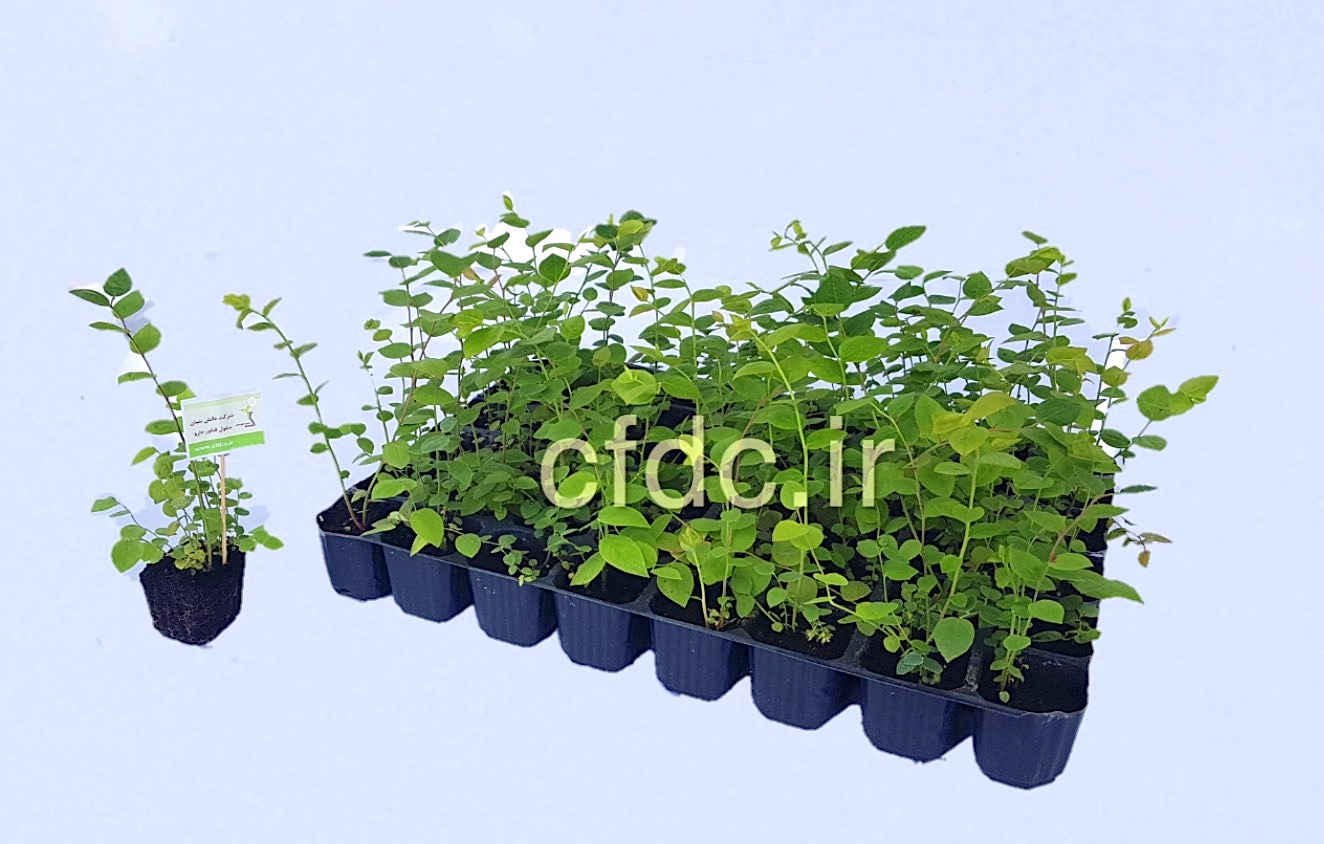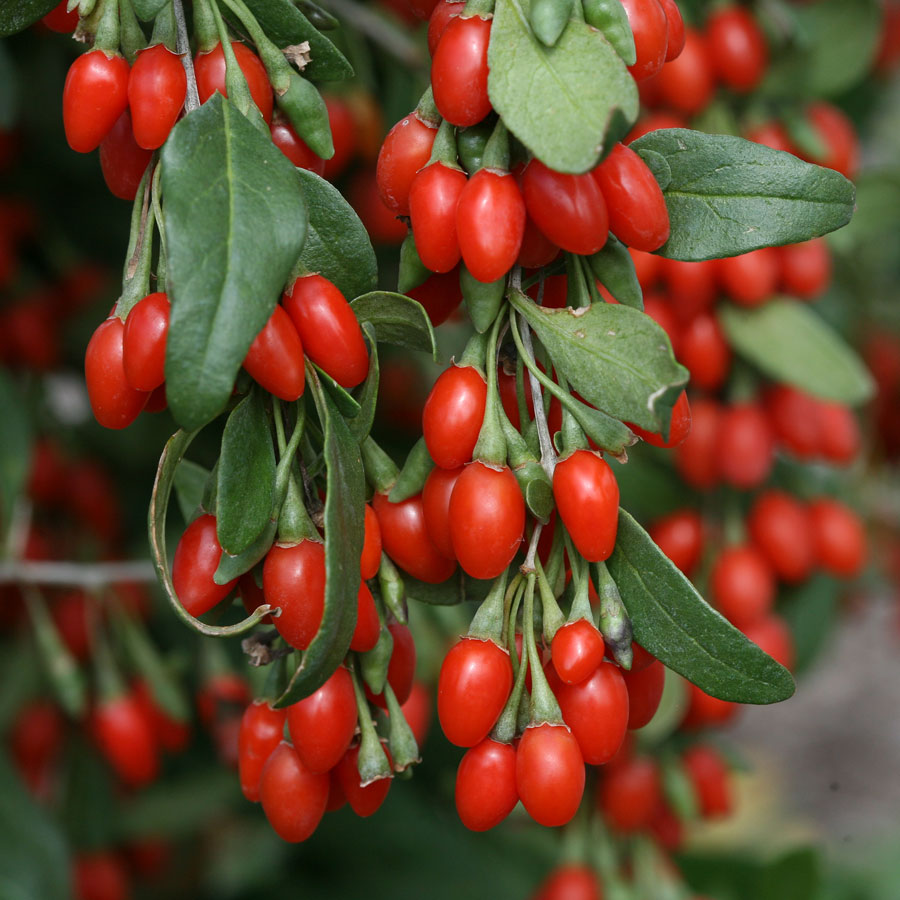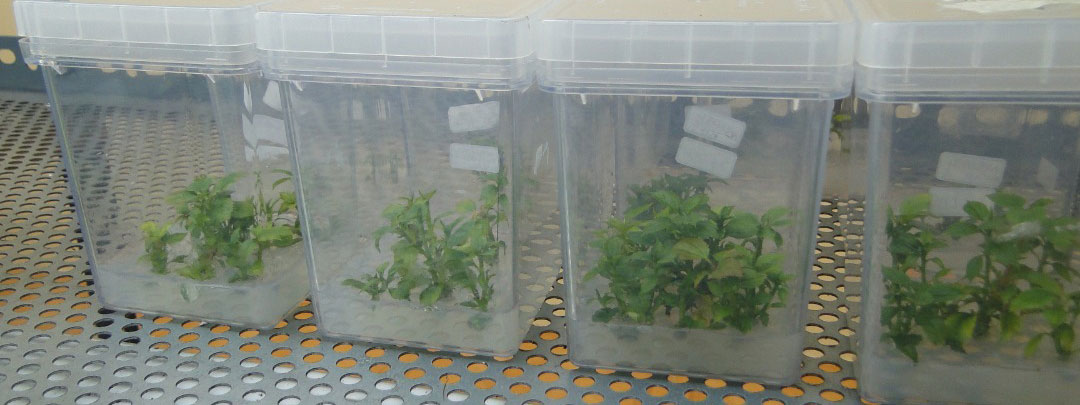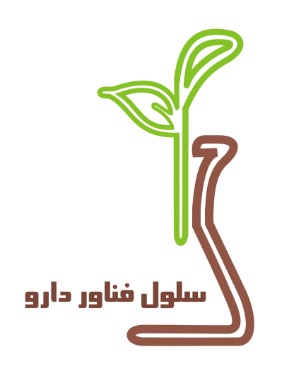Blueberry

Blueberries are perennial shrubs that vary in height between 60-200 cm. They have been known in Europe since 1930 and are classified into several varieties. The flowers may be white, pink or red and the size of the fruit varies from 5 to16 mm; they are initially green, then purplish red and finally dark purple, when ripe. Blueberries have small fibrous roots which may differ in diameter. Heavy soils and poor ventilation are not suitable for their growth; they grow in acidic media and are sensitive to alkaline media. As a result of their desirable nutritional and medicinal, blueberries have received a great deal of attention worldwide in recent years e.g. its annual production is more than 300 000 tons in the United States, 180 000 tons in Canada, 150 000 toms in Poland, and worldwide production exceeds to 600 000 tons annually. Their cultivation is in its initial stages in Iran and the fruit is currently imported.

Geographical distribution:
Different varieties of the plant are present in North America, Europe, and Asia but nowadays, blueberries are cultivated in most developed countries.
Nutritional properties:
Each 100 grams of fruit contains 57 kcal of energy, 14 g carbohydrates, 5.9 g sugars, 4.2 g fiber, 33 g fat and 74 g protein and also contains the following amounts of vitamins:
Vitamin A 54 IU, Thiamine (B1) 0.037 mg, Riboflavin (B2) 0.041 mg, Niacin (B3) 0.418 mg, Pantothenic acid (B5) 0.124 mg, Vitamin B6, Folate (B9) 6 μg, Vitamin C 9.7 mg, Vitamin E 0.57 mg, Vitamin K 19.3 μg.
The plant is also rich in minerals, which can be said to be one of the richest sources of minerals and vitamins, and for this reason, its fruit has been used as fresh, dried, jelly, fruit juice and also the preparation of a variety of cakes, foods and fruit desserts.
Medicinal properties:
Fruits of blueberry are rich in antioxidants and vitamins and for this reason delays the process of cellular senescence and are able to prevents cancer. The plant extract is effective in regulating cholesterol and blood pressure and has a role in preventing cardiovascular disease, treatment of urinary tract infections, maintaining brain function and improving memory. The anthocyanins present in blueberries have anti-diabetic effects and helps to reduce muscle damage caused by severe exercise. The leaves are also rich in flavonoids and antioxidant compounds and are being used as a herbal medicine in traditional medicine in different countries.
Values and characteristics of cultivation
Due to the high price of fruit of blueberry, its value and productivity are more than other garden products. Furthermore, its leave has administrative and commercial value that sells at a very good price. Distance of plants should be 1 to 2 m, rate of harvesting is 2 tons of fruit per hectare, PH of soil is 4.5 to 5.5, thermal tolerance is from -18 to -35.
References
- Wali al-Mozafarian. 2015. Identification of medicinal and aromatic plants of Iran. Farhang moaser Publications.
- 1- Bruce Eklund (2016). "2014 Blueberry Statistics"(PDF). United States Department of Agriculture, National Agricultural Statistics Service, New Jersey Field Office, Trenton, NJ. Retrieved 20 April 2016.
- 2- David E. Yarborough (2015). "Wild Blueberry Culture in Maine,". Cooperative Extension: Maine Wild Blueberries, University of Maine. Retrieved 20 April 2016
- 3-Deschênes V (2016). "New Brunswick to become world's largest producer of wild blueberries". Government of New Brunswick, Department of Agriculture, Aquaculture and Fisheries. Retrieved 18 May 2016
- 4-Dorff E (2015). "Blueberry varieties - Canada. In: The changing face of the Canadian fruit and vegetable sector: 1941 to 2011". Statistics Canada. Retrieved 18 May 2016.
- 5-Plant Propagation Protocol for Vaccinium corymbosum. available at: homeguides.sfgate.com/propagate-blueberries-cuttings-38707.html
- 5-Plants Profile: Vaccinium corymbosum, Highbush blueberry". US Department of Agriculture, National Resources Conservation Service.
- 6-Smith M.A.L, Marley K.A. Seigler D., Singletary KW, Meline B. (2000). Bioactive Properties of Wild Blueberry Fruits. Journal of food science , 38: 352.356
- 7- blueberrycouncil.org
- 8- whiteflowerfarm.com/how-to-grow-blueberries-vaccinium
Raspberry

Raspberry is a perennial plant in the form of thorny bushes. All of their species have permanent roots but, in some species, the aerial part is not permanent and the plant renews every year. Its branches are green and the roots are shallow. The fruit of raspberry is found in yellow, red, black and purple. In general, raspberries are divided into two groups of primocane and florican. This plant can be cultivated in greenhouses and fields. Heavy soils are not suitable for the growth of the plant and pH of the soil should be acidic.
In addition to vitamins, the fruit of raspberry is a rich source of a variety of useful and needed minerals. The fruit of raspberry is used as fresh and also in the preparation of jelly and various types of cakes and desserts. Furthermore, raspberry is used to produce marmalade, jams, fruit juices and nuts and its leaves are used in the form of herbal tea.

Nutritional properties
Each 100 grams of raspberry contained minerals such as Potassium 151 mg, Phosphorus 29 mg, Calcium 25 mg, Magnesium 22 mg, Iron 0.69 mg, Zinc 0.42 mg and Sodium 1 mg.
Every 100 grams of fruit contains the following:
Energy | Carbohydrates | Fat | Fiber | Sugars | Protein |
52 kcal | 11.94 g | 0.65 g | 6.5 g | 4.42 g | 1.2 g |
Vitamins | B1 | B2 | Niacin(B3) | Folate(B9) | Pantothenic Acid (B5) | B6 | B9 | Choline | C | K |
| 0.032 mg | 0.038 mg | 0.598 mg | 21 mcg | 0.329 mg | 0.055 mg | 21 µg | 12.3 mg | 26.2 mg | 7.8 µg |
Medicinal properties
Raspberry leaves and fruits are important sources of phenolic compounds including anthocyanins, flavonols, chlorogenic acid, flavonoids, tannins and procyanidins, and various types of vitamins that have high biological activity Protects the body against cardiovascular disease, cancer, inflammation, obesity and other chronic diseases. Black raspberry is a rich source of anthocyanins and is used in the treatment of visual impairments due to diabetes and fibrocystic diseases. The extract of this plant prevents the growth of colon cancer cells and reduces blood lipids. It enhances fertility and improves sexual health, boosts eye health, enhances immunity and boosts memory. It helps slow down aging, improves digestion, alleviates arthritis, aids women’s health, promotes health of tissues and blood vessels, improves hair health and helps fight eczema.
References
- 1) Barros, L., Oliveira, S., Carvalho, A.M., Ferreira, I.C.F.R.( 2010). In vitro antioxidant properties and phytochemicals of six medicinal plants from the Portuguese folk Journal of Industrial Crops and Products, 32(3): 572-579.
- 2) Burton-Freeman, B. M.; Sandhu, A. K.; Edirisinghe, I (2016). "Red Raspberries and Their Bioactive Polyphenols: Cardiometabolic and Neuronal Health Links". Advances in Nutrition: An International Review Journal. 7 (1): 44–65.
- 3) Cho, M. J., Howard, L. R., Prior, R. , Clark J. R. (2004). Flavonol glycosides and antioxidative capacity of various blackberry and blueberry genotypes determined by high-performance liquid chromatography/mass spectrometry. Journal of the Science of Food and Agriculture, 84: 1771-1782.
- 4) Funt, R.C., Hall, H.K. (2012). Raspberries (Crop Production Science in Horticulture). CABI. ISBN978-1-84593-791-1
- 5) Mazur SP, Nes A, Wold AB, Remberg SF, Aaby K (2014). Quality and chemical composition of ten red raspberry (Rubus idaeus L.) genotypes during three harvest seasons. Food Chem. 160: 233–40
- 6) R., (2012). Red raspberry( Rubus idaeus L.) cultivars in a Nordic climate- morphological trails and berry quality. Norwegian University Life Sciences.
- 7) C.B. (2007). Growing raspberries in your home garden.,Oregon State University.
- 8) Wang, W. D., Xu, Sh. Y. (2007). Degradation kinetics of anthocyanins in blackberry juice and concentrate. Journal of Food Engineering, 82(3): 271-275.
Goji berry

The plant was named in 1753 by Swedish botanist, Carl Levinson and it has been considered valuable since the beginning of 21st century in the United States due to its high nutritional value. Also named red diamonds, goji berries are native to Asia and have been cultivated in China for about 2000 years and. The shrub's height is approximately 3 meters. Its fruits are small, elongated and around 2 cm in length and their color is dark red or orange. The taste of their fruits varies from bitter to sweet. Alkaline soils with high ventilation are suitable for the growth of this plant. It is native to temperate and subtropical zones and is mainly cultivated in China, Japan, Korea and Vietnam as a nutritional and medicinal plant but has also been cultivated in tropical zones such as Australia, America, Central and Southwest Asia and South Africa.

Nutritional properties
Goji berry shoots and leaves are consumed as Vegetable, herbal tea and flavoring of beverages and foods. A very valuable and clear oil is extracted from its seeds which has medicinal uses. Goji berry’s fruit is rich in vitamins and antioxidants and is consumed fresh, dried and frozen as “Heath food”.
Medicinal properties
All parts of the goji berry plant including its leaves, root, bark and fruit have therapeutic properties. Dried fruit of goji berry contains carbohydrates, fats, edible fiber, sugar and protein. A set of minerals, vitamins and fatty acids such as sodium, potassium, calcium, iron, zinc, selenium, vitamin C, carotene, thiamine, riboflavin, lutein, lycopene, polysaccharides, betaine and peptidoglycans are present in the fruit. This plant is used to treat liver disease, infertility, abdominal pain, dry cough, lethargy and headache in traditional medicine. In the past, goji berry was used as an elixir of longevity. It is currently used to increase sexual ability and fertility, accelerate weight loss, decelerate aging, cure liver detoxification, strengthen vision and maintain blood circulation, stabilize blood sugar, rejuvenate skin and increase immune system ability.
characteristics of cultivation
The planting distance is 2 to 3 m, the flowering period spans from May to late June, the rate of harvesting is 10 tons of fruit per hectare, the pH of the soil can vary from 7 to 8.5, and it tolerates temperatures between -28 to 42 ºC.
Sources:
- 1-Classification for Kingdom Plantae Down to Genus Lycium L." US Department of Agriculture, Natural Resources Conservation Services. 2017. Retrieved 26 January 2017.
- 2-Harunobu A, Norman R. F. (2011). A review of botanical characteristics, phytochemistry, clinical relevance in efficacy and safety of Lycium barbarum fruit (Goji). Food Research International -1702–1717
- 3- https://gardenoracle.com/images/lycium-barbarum.html
- 4- Hye Won Lee, Young Hwa Kim, Yun Hee Kim, Gwan Ho Lee, and Mi Young Lee (2014). "Discrimination of Lycium chinense and Lycium barbarum by taste pattern and betaine analysis". International Journal of Clinical Experimental Medicine, 7( 8): 2053–2059.
- 5- Isabelle, M.; Lee, B.L.; Lim, M.T.; Koh, W.-P.; Huang, D.; Ong, C.N. (2010). "Antioxidant activity and profiles of common vegetables in Singapore". Food Chemistry. 120 (4): 993–1003.
- 6- Wolfberry festival to be held in Ningxia". China Daily. 2004-07-19. Retrieved 2015-02-05.
Passion fruit

Passion fruit (scientific name: Passiflora caerulea) is a flowering plant that grows mostly in tropical parts of America and Africa. This plant has a rapid growth and climbing stems that make it easy to reproduce by cutting. Passion fruit is an ornamental plant from the Myrtaceae family that has long bush. Its oval leaves are connected to each other and include 5 complete divisions. Its flowers are large and clock-shaped. They are found in red, blue or purple color. The fruit is green, in the early stages, and colored at repining time.
This plant contains flavonoids, harmala alkaloids and cyanhydric acid and its fruit is a source of proline, maltol and ethyl maltol. The leaves, fruits and flowers of the passiflora plant have medicinal use.

medicinal properties
- It is a tranquillizer and helps treatment of insomnia.
- It reduces cholesterol levels.
- It relaxes hyperactive children.
- Its herbal tea reduces pains and troubles during menopause and helps cure dizziness, neurasthenia and depression.
- It helps prevent cancer and cardiac diseases.
- It reduces allergies and symptoms of asthma
- Its seed is an important source of fiber.
Growth conditions:
This plant needs subtropical climate and can't tolerate frost. The plant was cultivated in mountainous climate from far north to San Jose. Some of its leaves and stems may suffer damage in cold winters, but majority of roots germinate and grow again after the destruction of their tips. Passion fruit cannot grow in severe summer heat. The annual rainfall essential for this plant is at least 35 inches. climbing stems of passion fruit create beautiful corridors, but they require a support to stand. Stems can grow 15 to 20 feet per year and usually have a short life span of 5 to 7 years. Sequential shoots and leaves of passion fruit are evergreen. When the leaves reach maturity and dentate shape, they become three-fold.
Blackberry
Nutritional Properties
Tasty, easy to grow and nutritious, it's no wonder more and more gardeners are planting blackberries. Cultivated berries are sweeter and larger than wild varieties—and usually grow in zones 5-9. Blackberries can be eaten straight from the bush, made into delicious jams and preserves, used in many types of cakes, tarts and muffins, made into sauces for savory dishes, or even made into liqueurs or spirits such as Blackberry Gin.
Whilst being delicious and a highly-versatile fruit, Blackberries are also well known for the health benefits that they can bring. They’re packed with Vitamin C which is known to help strengthen your immune system and work as an antioxidant. Full of fiber, which can help to lower cholesterol and lose weight, as well as being high in both Vitamin K and Manganese.
Each 100 g Blackberry contain minerals such as Calcium 29 mg, Iron 0.62 mg, Magnesium 20 mg, Phosphorus 22 mg, Potassium 162mg, Sodium 1 mg, Zinc 0.53 mg.
Vitamins | A | B1 | B2 | B3 | B6 | B9 | C | E | K |
| 214 IU | 0.020 mg | 0.026 mg | 0.646 mg | 0.030 mg | 25 mcg | 21.0 mg | 1.17 mg | 19.8 mcg |
Per 100 g blackberry:
- Energy: 43 Kcal (180 KJ)
- Carbohydrates: 9.61 g
- Fat: 0.49 g
- Fiber: 5.3 g
- Sugars: 4.88 g
- Protein: 1.39 g
Medicinal properties
they are known to destroy the free radicals that harm cells and can lead to cancer. They also help protect and strengthen the immunity, which lowers the risk of cancer. They are especially helpful when it comes to reducing the risk of esophageal, cervical, and breast cancer. Blackberry leaves and roots are a long-standing home remedy for anemia, regulates menses, diarrhea, and dysentery. They are used to treat sore throats, mouth ulcers, gum inflammations, lower cholesterol and lose weight. A decoction of the leaves is useful as a gargle in treating thrush and also makes a good general mouthwash.
Loganberry
A unique and flavorful berry! This natural cross between blackberries and red raspberries produces long, tasty, dark red berries That are good for fresh eating, juicing, or making pies, jams, and jellies. Its canes grow horizontally, so supports help keep fruit off the ground.
Loganberry plants are sturdy and more disease- and frost-resistant than many other berries. However, they are not very popular with commercial growers due to several problems which increase labor costs, since the plants tend to be thorny and the berries are often hidden by the leaves. Additionally, berries of varying maturity may grow on a single plant, making it difficult to completely harvest each plant. Loganberries are therefore more commonly grown in household gardens.
Nutritional properties
A cup of frozen loganberries (147 g) contain minerals such as Potassium 213 mg, Phosphorus 38 mg, Calcium 38 mg, Magnesium 31 mg, Iron 0.94 mg, Selenium 0.3 mcg, Manganese 1.833 mg, Zinc 0.5 mg, Copper 0.172 mg.
Vitamins | A | B1 | B2 | Niacin | Folate | Pantothenic Acid | B6 | C | E | K |
| 51 IU | 0.074 mg | 0.05 mg | 1.235 mg | 38 mcg | 0.359 mg | 0.096 mg | 22.5 mg | 1.28 mg | 11.5 mcg |
A cup of frozen loganberries (147 g) contains the following:
- Energy: 80.9 Kcal
- Carbohydrates: 19.1 g
- Fat: 0.5 g
- Fiber: 7.8 g
- Sugars: 11.3 g
- Protein: 2.23 g
Medicinal properties
- Helps in losing weight
- Reduces wrinkles
- Fights macular degeneration
- Strengthens Immune System
- Promotes Brain Health
- Good for Digestion
- Fights Asthma
- Make for a Healthy Heart
- Improves Feminine Health
- Prevents Cancer
- Antimicrobial effects
How does Selul Fanawar Daru Company provide products?
 ۱
۱Customer contact
 ۲
۲sending information
 ۳
۳contract
 ۴
۴